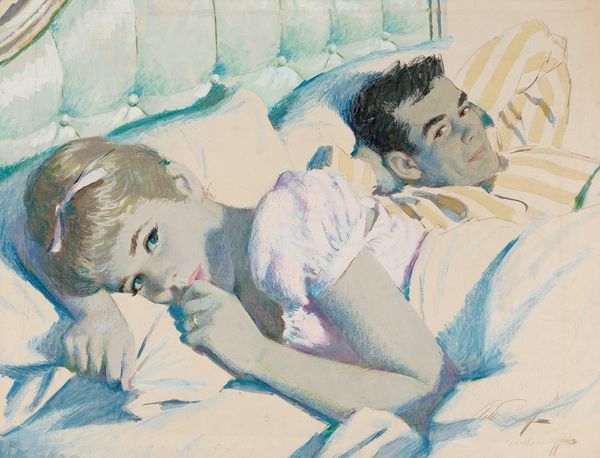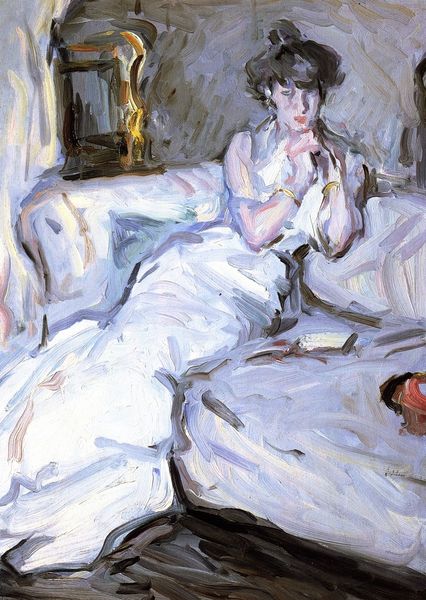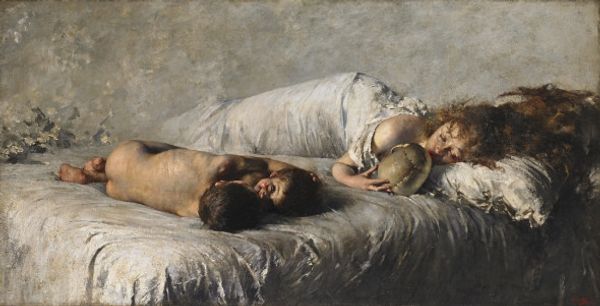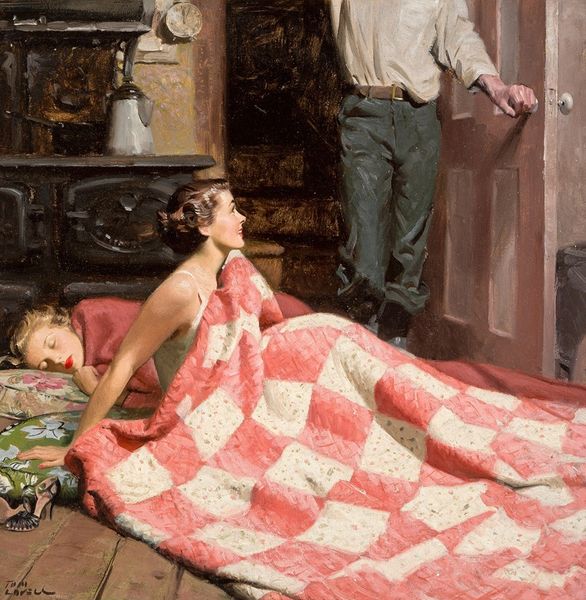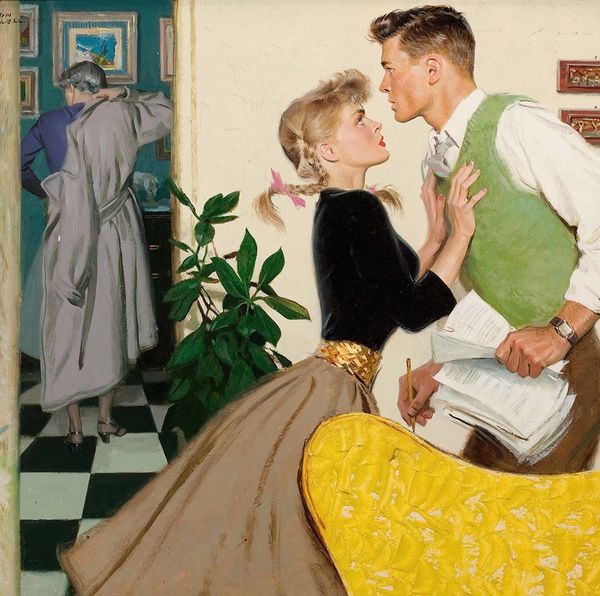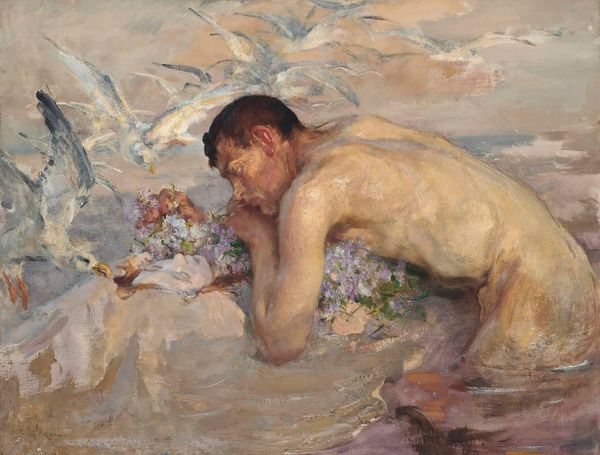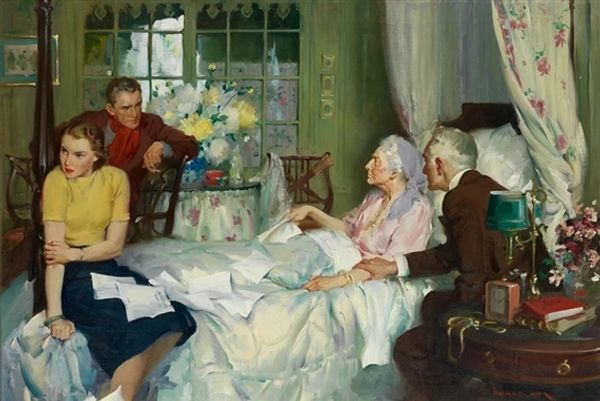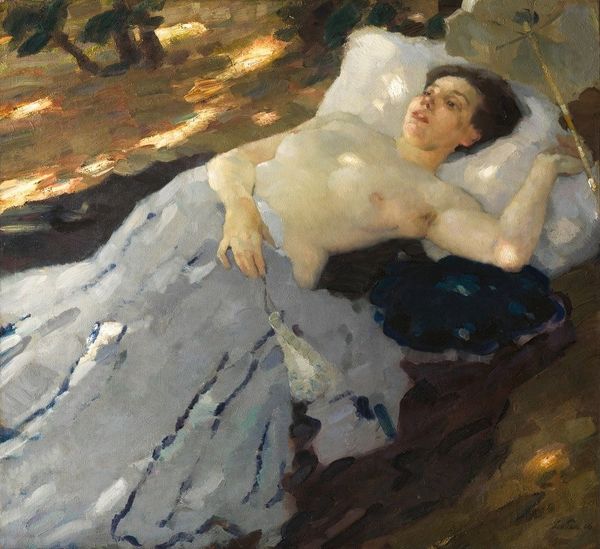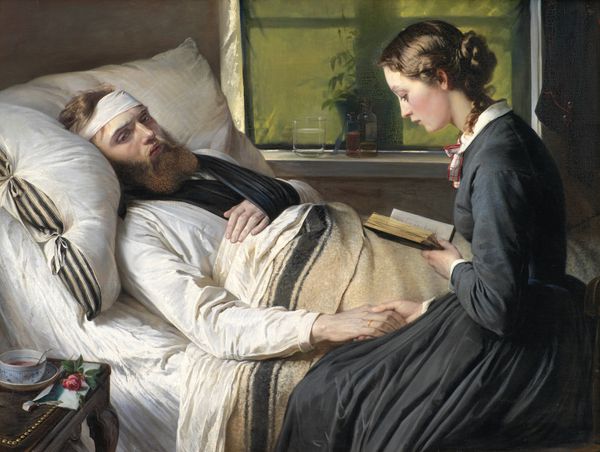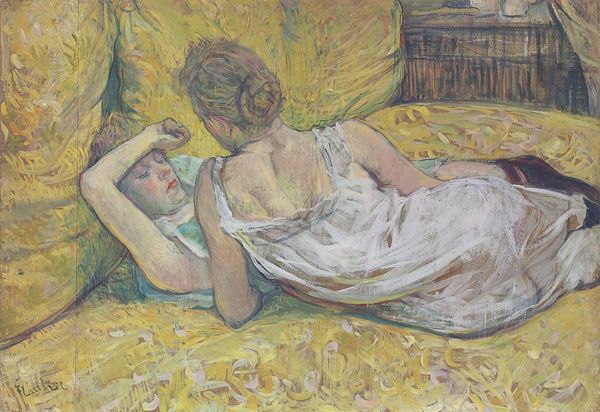
Copyright: Modern Artists: Artvee
Editor: Here we have Tom Lovell's "Day Of Yellow Flowers," created in 1956 using oil paint. It has a very tender mood. What immediately strikes me is how the artist focused on capturing this intimate moment. What are your initial thoughts about this artwork? Curator: I see an almost staged scene that reveals quite a bit about mid-century values regarding gender roles and the idealized domestic space. The woman, seemingly asleep, is passively receiving flowers from the man. Consider the labor embedded in this scenario. Who likely purchased those materials for the painting itself? Editor: That's a good point. It’s interesting how the whole scene relies on this economic system that enabled its creation, isn't it? The paint, the canvas… all required someone's labor and resources. Curator: Exactly! And the wallpaper! It all points towards a specific class and set of consumer habits. Furthermore, the materials themselves speak volumes: the smooth oil paint creating a veneer of perfect domesticity, contrasting with the labor it obscures. Does this aesthetic mirror how the artwork intends to convey social status through objects of material consumption? Editor: Absolutely, the objects tell a story about that era's consumerism, where the goal was this idyllic home life, which depended on these gender dynamics and the economic situation of the family portrayed. The material quality suggests middle-class aspirations, made possible through manufacturing, while perhaps romanticizing these achievements. Curator: How then do you think this intersects with Lovell's role as an illustrator, primarily for pulp magazines, whose distribution democratized certain imageries? Was it mass-produced, or was the aesthetic more in line with an artistic, classical style of oil painting that allowed for more careful handling? Editor: I see your point. By mass-producing images of bourgeois aspiration in this way, Lovell was essentially circulating idealized and exclusionary practices within working-class and lower-middle-class homes. Thank you; that offers such an insightful viewpoint on materiality! Curator: It's fascinating how understanding the materials and the process behind the image reframes how we perceive its seemingly straightforward narrative.
Comments
No comments
Be the first to comment and join the conversation on the ultimate creative platform.
